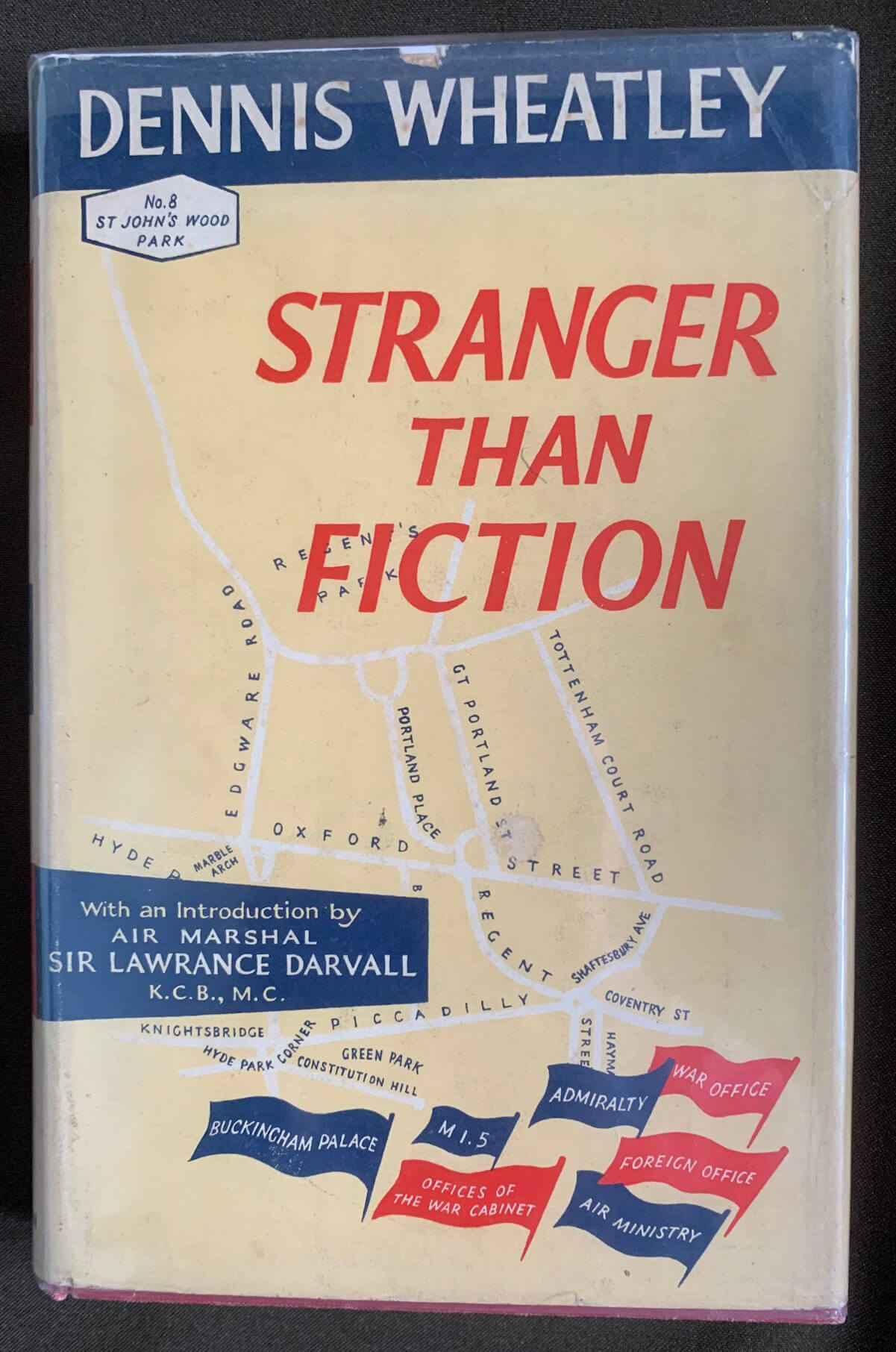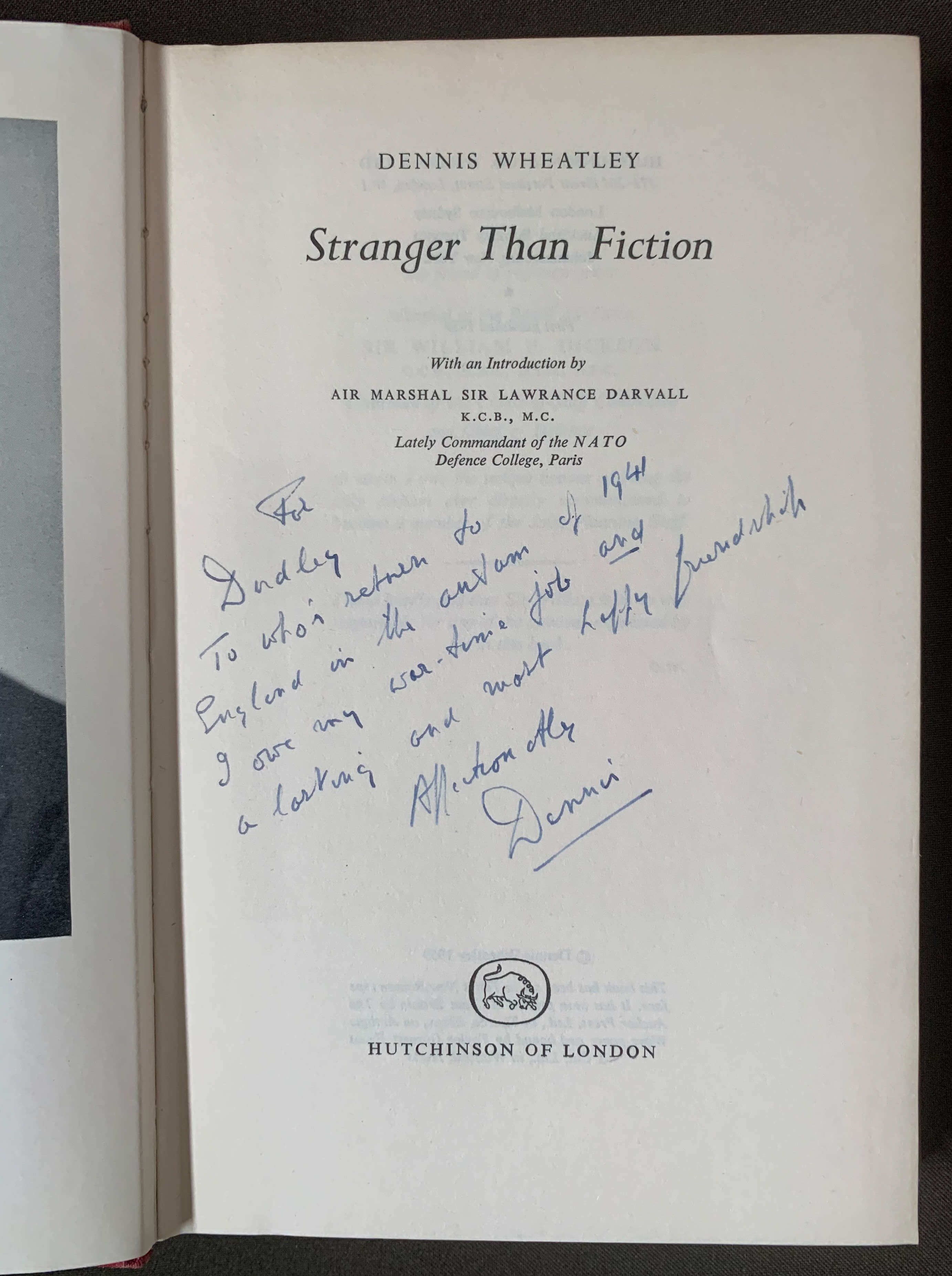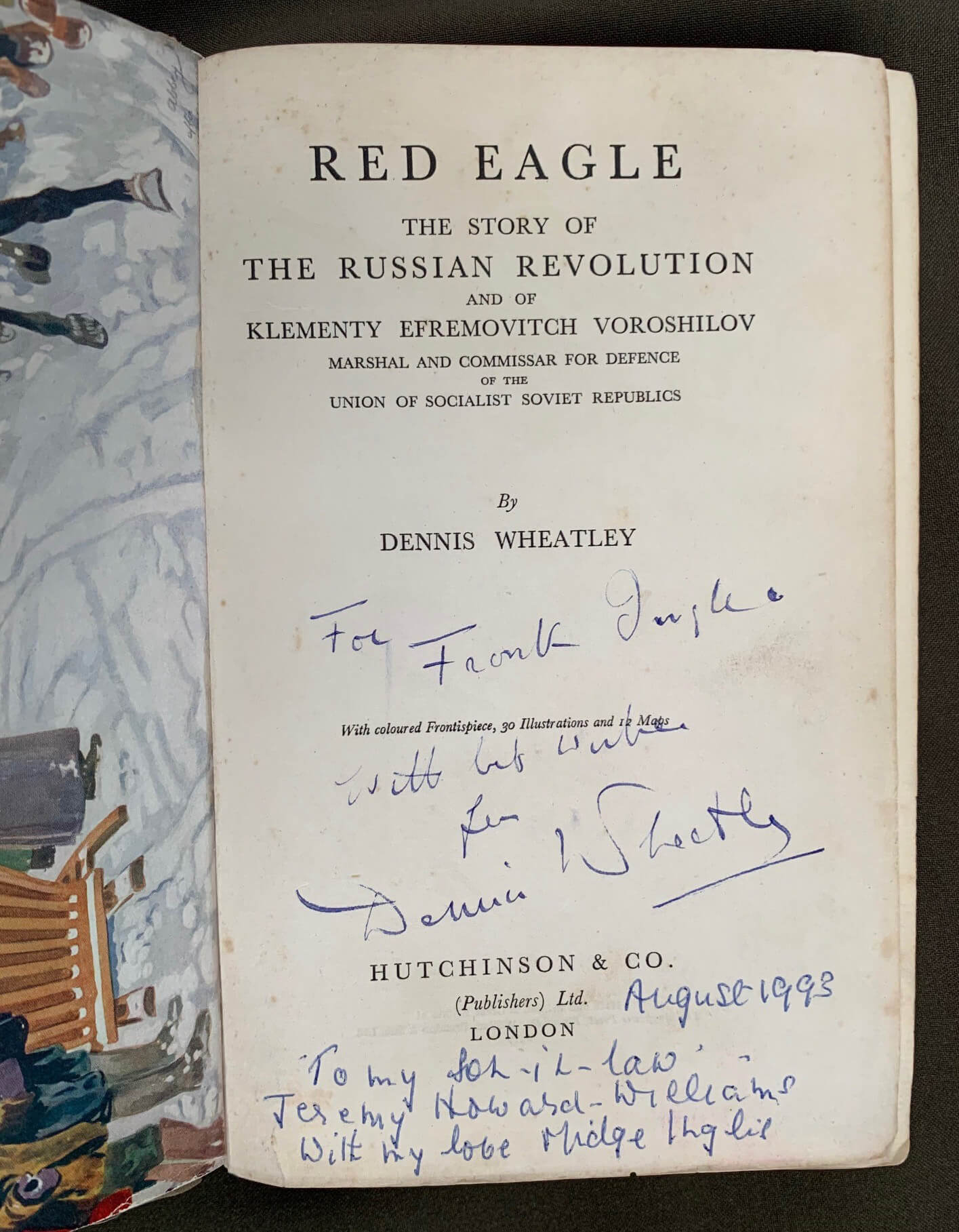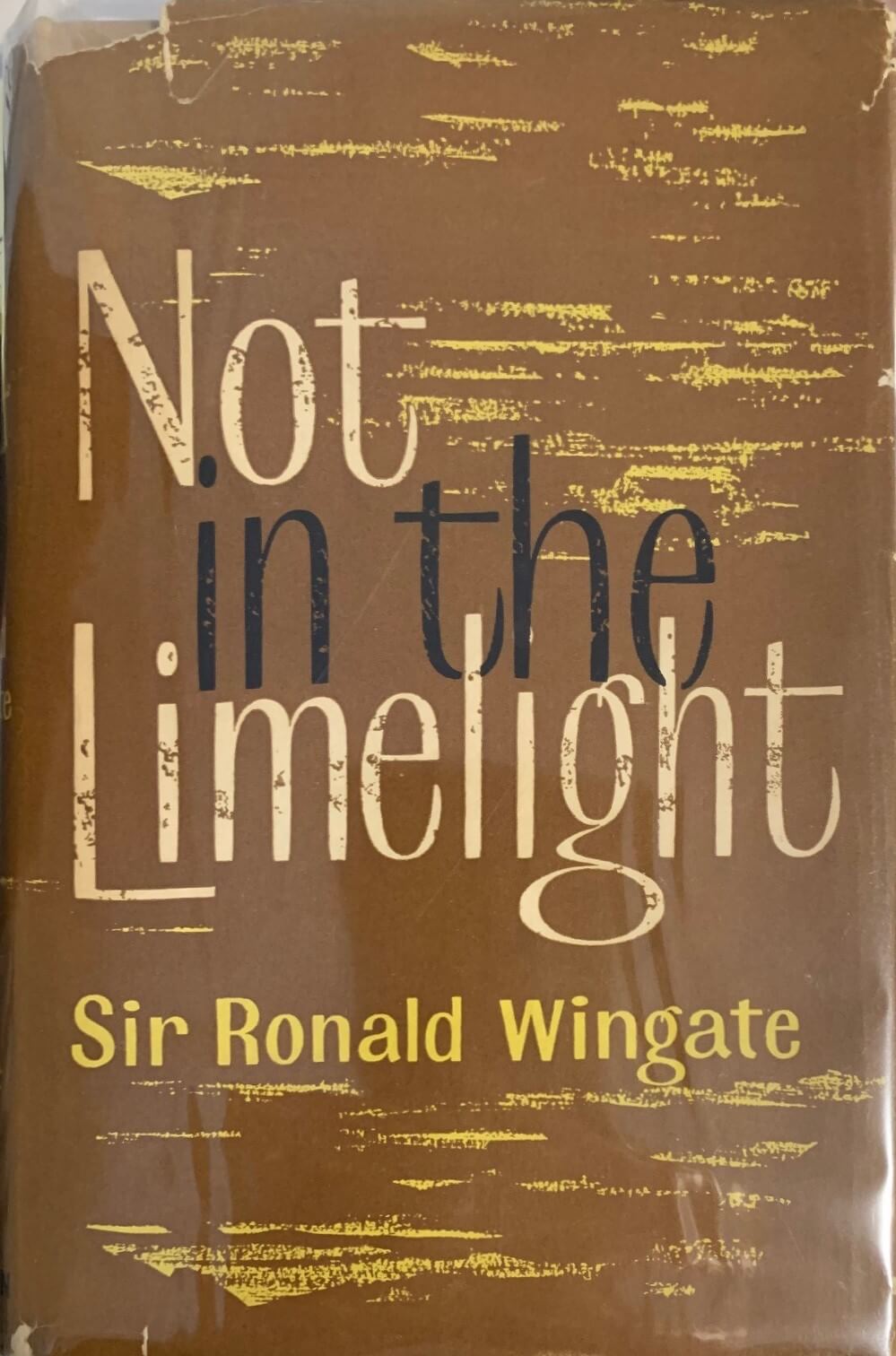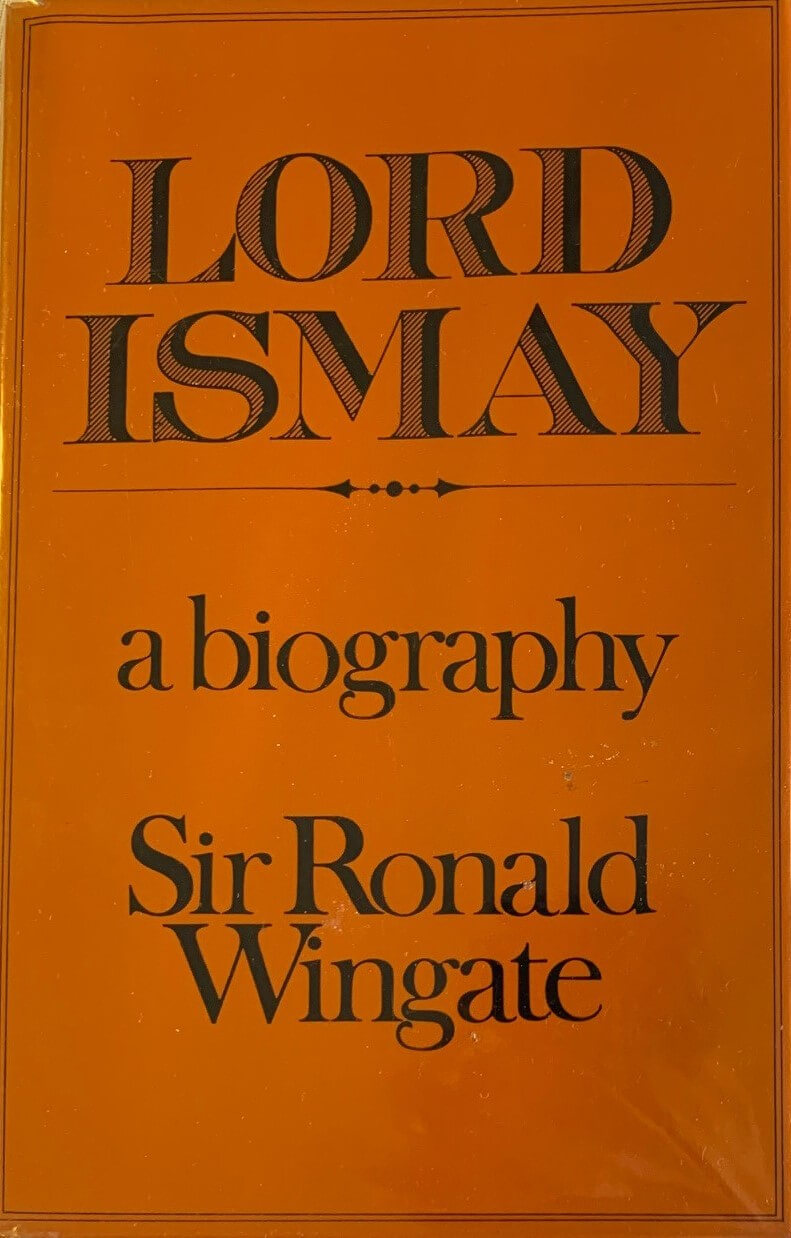
 |
Floor Plan |  |
The Dennis Wheatley 'Museum' - Dennis Wheatley in World War II: a supplement
Both Wheatley and Wingate publish partial wartime memoirs in 1959...

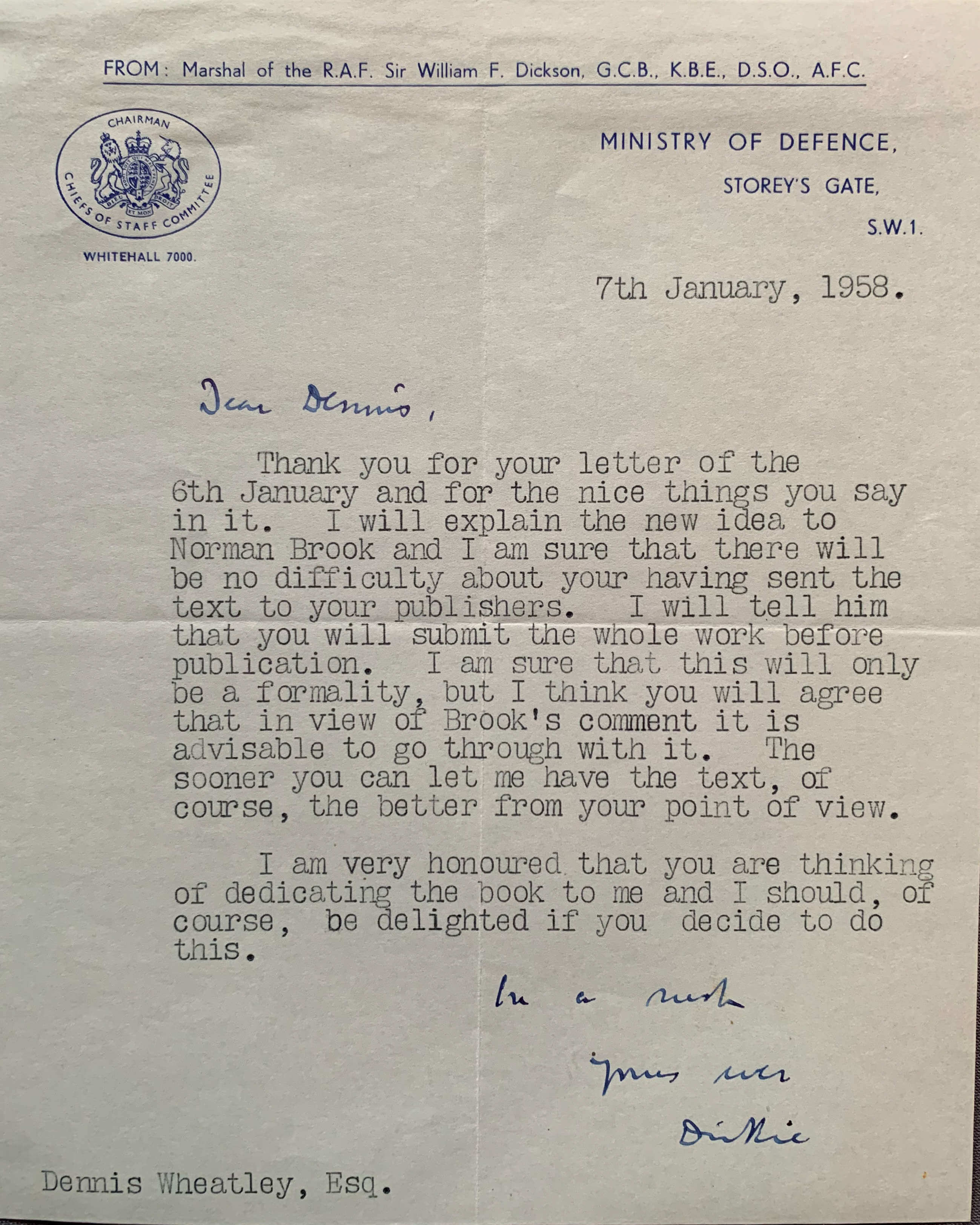
DW is given somewhat reluctant (?) permission to publish
John Drew had been the Home Defence Executive representative on the XX Committee, and was thus an influential person and himself full of secrets
Click on the image to enlarge
In 1959, both the sixty-two year old DW and the seventy-year old Ronald Wingate published memoirs. DW only published the story of what he did in the first two years of World War Two, and stopped with the shortest and vaguest account (a few pages only) of his time as a Deception Planner. Wingate wrote his entire life-story (a reviewer commented that he could easily have expanded it from one to many volumes), and included a brief if excellent chapter on Allenby, Wavell, and Deception Planning. Both needed official approval to publish, and letters, including some not illustrated here, show that DW found it quite difficult to obtain, even though he had been a civilian when he wrote his War Papers. Wingate for his part found that the authorities were only interested in vetting what he had written about his own World War Two activities.
Wingate's autobiography was published by Hutchinson, so one may perhaps assume that DW helped him to get it published.
It is noteworthy that neither mentions The London Controlling Section by name.
Each mentions the other, and Wingate's mention of his old friend DW is suitably charming:
Under the Chiefs of Staff was a small secretariat and then there came the planning staff in its various echelons. Every unit was inter-Service. At the head were three directors of plans, a Brigadier, a Post-Captain, and an Air Vice-Marshal. Then there were the Operational Sections; the Strategic Planning Section, the Future Operations Section, and the Joint Intelligence Staff. I do not believe there were more than thirty or forty officers in the whole of these organizations, and they were, with very few exceptions, all professional soldiers, sailors or airmen. There were very few amateurs. I was one, but I scarcely counted.
There was Johnny Bevan, in private life a well-known stockbroker, but as he had gained an M.C. in the First World War, I feel that his amateur status had been compromised, and there was Dennis Wheatley, who, though he had been a gunner in the First World War, was now slowly climbing the ladder of promotion in the Air Force. There was Denis Capel-Dunne... and George Mallaby... That was about all.
Wingate also wrote a biography of General Ismay in 1970, the general having died in 1965, and naturally he gave a copy to DW.
Some of the copies of 'Stranger Than Fiction' that DW inscribed to his former wartime colleagues are illustrated above, as well as Air Marshal Frank Inglis' copy of 'Red Eagle'. The Inglis family prized the book so highly that when the Air Marshal died, his widow re-dedicated it to another family member.
As will be seen in a later exhibit, DW's memoirs of his time as a Deception Planner were only published - and even then not fully - after his death.
| References: | Wingate quotes from 'Not in the Limelight' pp184-8: |
| Provenance: | Private Collections |
